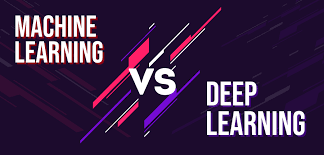In the fast-changing world of artificial intelligence, two terms come up often – “Machine Learning” and “Deep Learning”. These two concepts support the creation of AI systems and have revolutionized the way we solve complex issues. While both machine learning and deep learning share a common goal of empowering machines to learn from data, they differ critically in their approaches, architectures, and applications.
The following comprehensive article aims to offer a detailed overview of the differences between deep learning and machine learning. As we go further, we will discover their core features, architectures, and applications. This is to acquire a better understanding of when and where each technology suits the best.

Foundations of Machine Learning
Machine Learning refers to a subset of artificial intelligence that primarily focuses on the development of algorithms and models that are capable of learning from data without being explicitly programmed. The main objective of machine learning as introduced in the popular machine learning online training program is to allow machines to generalize patterns and make decisions based upon unseen data.
The major characteristics of ML include the following:
-
Feature Engineering: In traditional machine learning, humans generally play a significant role in the selection of relevant features from the data. These characteristics thereby offer the input for the learning algorithms.
-
Supervised and Unsupervised Learning: Machine learning training incorporates supervised and unsupervised learning. While supervised learning involves training models on labeled data, unsupervised learning involves identifying patterns and structures using models with unlabeled data.
-
Algorithms: Machine learning encompasses different algorithms, like decision trees, support vector machines, and random forests, for making predictions or decisions.
Foundations of Deep Learning:
Deep Learning is identified as a subfield of machine learning that emphasizes artificial neural networks. The composition and operation of the human brain served as the model for these networks. Deep learning online training encourages the usage of neural networks with multiple layers (deep neural networks). This is done to automatically extract characteristics and hierarchies from data, thereby removing the need for extensive feature engineering.
The key factors of deep learning introduced in deep learning training courses involve the following:
-
Neural Networks: Deep Learning depends on artificial neural networks, which comprise layers of interconnected nodes. Each node processes modifies data and passes it on to the following layer.
-
Deep Architectures: Deep Learning networks usually have several hidden layers between the input and output layers. This permits the automatic retrieval of complex characteristics and patterns.
-
End-to-End Learning: Deep Learning models have the ability to learn directly from raw data, making them suitable for tasks such as voice and picture recognition.
Differentiating Between Machine Learning and Deep Learning:
The major differences identified between machine learning and deep learning according to machine learning training and deep learning training are as follows:
Conclusion:
Artificial intelligence is built on two pillars: machine learning and deep learning, each with advantages and disadvantages. Which one to choose will rely on the particular problem at hand, the data that is accessible, the processing capacity, and the criteria for interpretability.
With ML’s interpretability and explicit feature engineering, machine learning training emerges appropriate for a variety of applications and can yield significant outcomes even with smaller datasets. Nonetheless, deep learning is the method of choice for problems like computer vision, natural language processing, and speech recognition because of its capacity to automatically discover intricate patterns and representations from unprocessed data.


